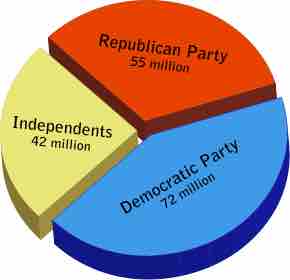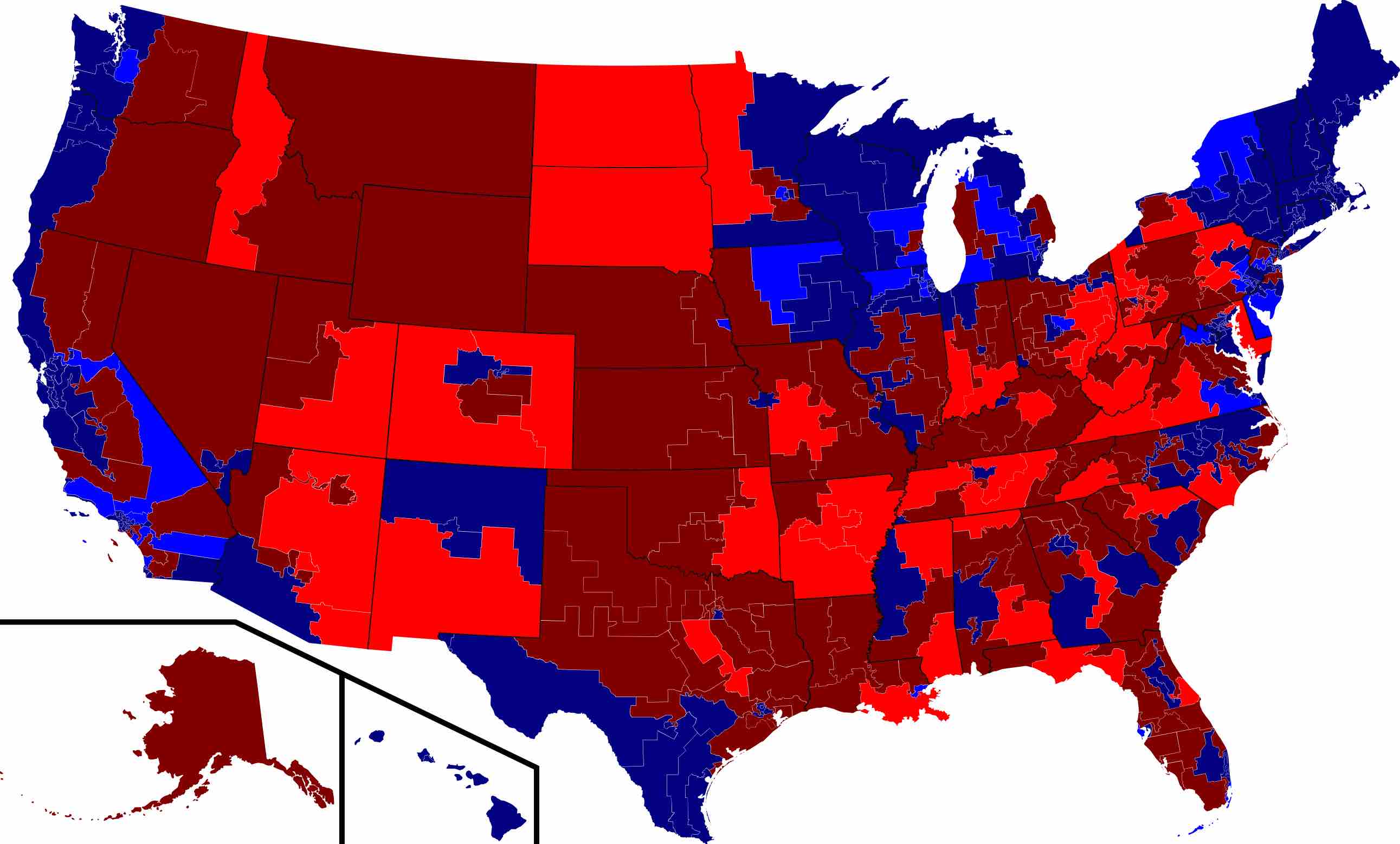Party Self-Identification
Oftentimes, people vote according to what party they identify with. A person's partisan identification is defined as a long-term attachment to a particular party. Americans are not required to formally join party organizations as is the case with other democracies. Instead, people self-identify as Republicans, Democrats, or members of minor parties. They also can declare themselves independent and not aligned with any political party. People who identify with a political party either declare their allegiance by joining the party or show their support through regular party-line voting at the polls.
Party Identity: A Fixed Social Identity?
Some researchers view party identification as "a form of social identity," in the same way that a person identifies with a religious or ethnic group. In this view, party identification develops as a consequence of personal, family, social, and environmental factors. Childhood influence is one of main driving factors behind formation of party identification. During childhood, the main political influence comes from parents, other close family members, and close surroundings such as the immediate community. Children remember events that happened during their childhood and associate them with the political party, whether or not they were connected with those events. For example, a child growing up in the 1970s would associate the Republican party with the Watergate scandal of the Nixon administration or a child growing up in the 1990s would associate the Democratic party with the sex scandal of the Clinton administration. Although these parties might or might not embrace the issues that happened during that administration, a child could forever associate the party with those memorable events.
During adulthood, people can begin to adjust their party loyalties according to their personal experiences. The longer an individual holds a party identification, the stronger that attachment to the party becomes. Because of this pattern, older adults are more likely to hold strong party attachments, and less likely to change them than young adults.
Party Identity: A Changing Choice?
Other researchers consider party identification to be more flexible and more of a conscious choice. They see it as a position and a choice based on the continued assessment of the political, economic, and social environment. People can easily switch their party affiliation or distance themselves from parties entirely.
Increase in Independents
Since the 1960s, there has been a gradual decline in identification with political parties and a rise in the number of independents, which means less and less people are motivated to vote along party lines alone. In 2000, more people identified as independents (40 percent of the voting population) than affiliated with either the Democratic (34 percent) or Republican (24 percent) parties for the first time in history. The proportion of people registering as independents increased 57 percent between 1990 and 1998, while those registering as Democrats declined by 14 percent and as Republicans by 5 percent. In 2011, 31 percent of the population identified as Democrats, 29 percent as Republican, and 38 percent as independents .

Party Identification, 2004
This chart indicates the number of citizens registered as Republicans, Democrats, or Independents. The number of people identifying as independents is rising, indicating that less people are voting solely along traditional party lines.
As voter identification with political parties has declined, so has dedication to the two-party system. According to a national survey, citizens have more trust in product brands, such as Nike, Levis, Honda, and Clorox, than in the Democrats and Republicans. Since the 1980s, Americans have become skeptical about the two major parties' ability to represent the public interest and to handle major issues facing the country, such as crime, the environment, and saving Social Security. At the same time, support for third parties, like Libertarians, has increased over the last decade. A social movement grouped under the umbrella of the "Tea Party" emerged in 2010 but its adherents never created an officially recognized political party. Still, the two-party system continues to dominate the political process as a viable multiparty alternative has not emerged .

Voting Along Party Lines
This chart indicates the results of the 2008 presidential election. Dark red districts supported Republican for President and Congress; red districts supported a Republican for President, and Democrat for Congress. Dark blue indicates districts that supported Democrat for President and Congress; blue indicates districts that supported Democrat for President and a Republican for Congress.
Groups and Party Identification
Party coalitions consist of groups that have long-term allegiances to a particular political party. Regions of the country establish loyalties to a specific party as a result of the party's handling of a war, a major social problem, or an economic crisis. Social, economic, ethnic, and racial groups also become aligned with particular parties, and then vote according to that party identification. For example, Catholics and labor union members in the Northeast form a part of the Democratic coalition. White fundamentalist Protestants are a component of the Republican coalition. Parties count on coalition members to vote for them consistently in elections.
Strong Party Identification and Voting Patterns
Those people who identify with a party tend to vote for their party's candidate for various offices in high percentages. Those who consider themselves to be strong partisans, strong Democrats and strong Republicans respectively, tend to be the most faithful in voting for their party's nominee for office, and are typically the voters who practice straight-ticket voting.